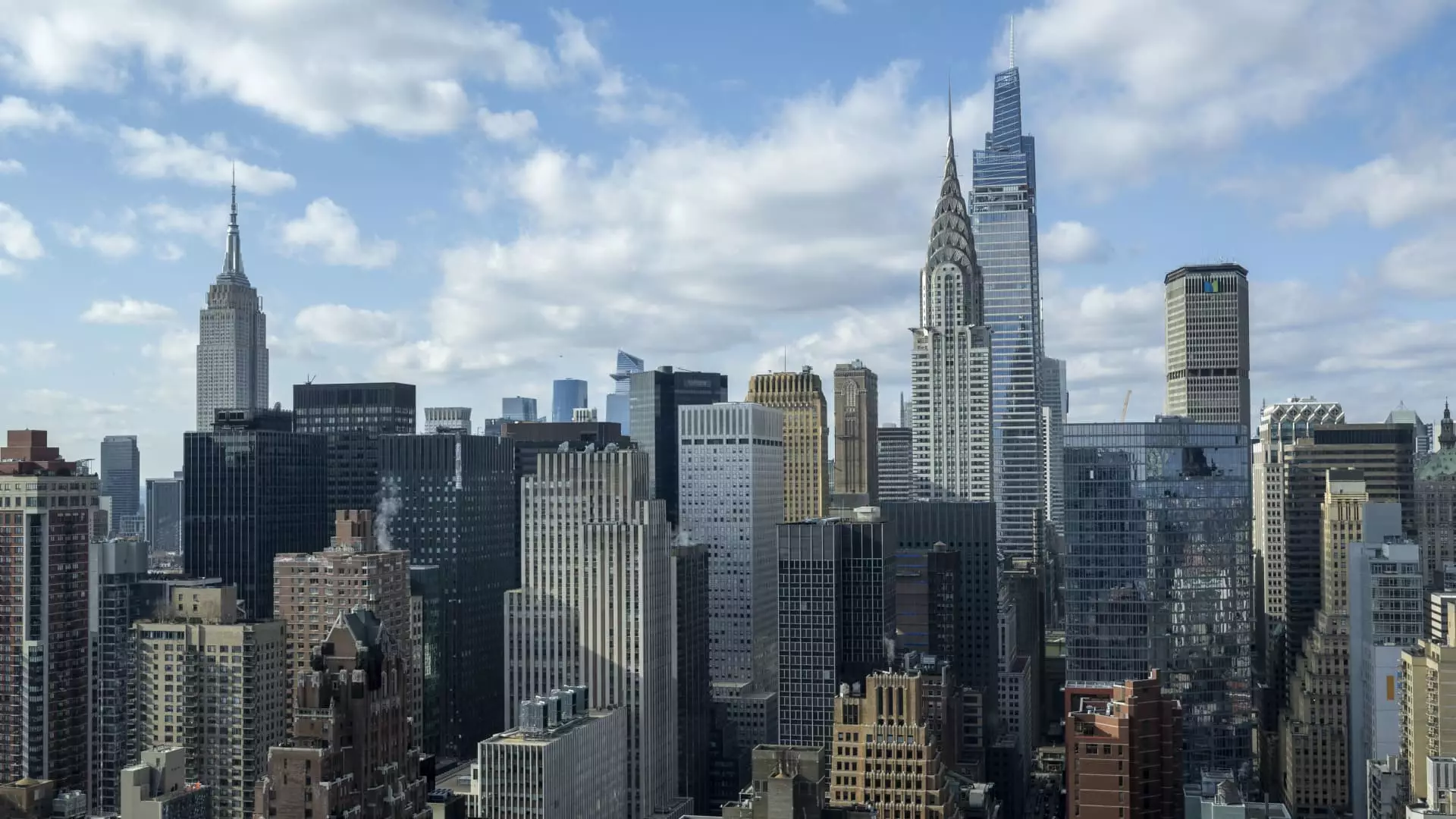In recent months, New York City’s office market has demonstrated an impressive resurgence, finally returning to demand levels seen before the pandemic disrupted normalcy. This revitalization of interest in office spaces can be attributed to a couple of key factors: the increase in the workforce returning to in-person roles, and a proactive push from employers encouraging their existing staff to resume their office routines. Recent data from VTS, which tracks tenant tours and usage, indicates that there was an astounding 25% jump in demand during the fourth quarter compared to the same period in the previous year.
The recovery observed in New York is not simply a fluke; it can be traced back to the city’s distinctive blend of cultural and economic influences. Industries like finance and technology, which are cornerstones of New York’s economy, are particularly conducive to in-office work due to the collaborative nature these sectors demand. VTS CEO Nick Romito aptly encapsulated this sentiment when he underscored how these sectors have catalyzed the move back to in-person work environments.
A pertinent player in this rejuvenated market is SL Green Realty Corp., a leading real estate investment trust (REIT) primarily focused on Manhattan’s office and retail sectors. Recently, SL Green’s earnings report indicated a shortfall in revenue expectations. Despite this, analysts believe the leasing demand’s upward trajectory is further tightening the office market, indicating a robust recovery. CEO Marc Holliday elaborated on future job growth in the city’s office-using sectors, projecting around 38,000 new positions by 2025, predominantly in finance, business services, and information technology.
The implications of this anticipated growth are substantial. As Holliday pointed out, each one of these jobs represents potential demand for millions of square feet of office space. With companies increasingly mandating stronger on-site attendance, the forecast indicates a bright outlook for the office leasing market for years to come. In fact, SL Green’s occupancy rate stood impressively at 92.5% at the year’s end, with projections suggesting further growth to above 93% in the upcoming year.
In a further testament to the market’s recovery, tech giant IBM has committed to their New York footprint by signing a substantial expansion lease with SL Green at One Madison Avenue. This lease adds nearly 93,000 square feet to IBM’s existing space, highlighting the company’s unwavering commitment to its New York operations. The expansion, according to IBM’s senior vice president Joanne Wright, aims to foster collaboration and connection among employees and clients alike, showcasing a broader trend of companies choosing to invest in their physical workplace environments.
The Broader Landscape of U.S. Office Markets
While New York leads the charge in office space recovery, it is essential to acknowledge the broader national context. Other cities have also begun to see improvements in their office markets. For example, San Francisco recorded a remarkable 32% annual growth rate in demand—a greater percentage than New York, albeit starting from a much lower baseline. Likewise, cities like Seattle and Chicago have shown growth rates near 15%, as businesses increasingly adopt hybrid work models necessitating consistent in-office attendance.
Ryan Masiello, chief strategy officer of VTS, emphasized that while some markets are bouncing back to typical office trends, the national scenario reflects a gradual but steady recovery. Nationally, demand has increased by 12% from the previous quarter, a notable achievement considering historical trends of decreased demand in the last quarter of the year.
The current demand landscape reveals a significant willingness among businesses to invest in office space, despite lingering economic uncertainties. Masiello noted that this trend marks a shift in confidence and a commitment to long-term strategic planning for organizations operating in an evolving economic climate. Overall, New York City’s recovery illustrates the power of collaboration and the innate human desire to connect in dynamic work environments—a promising sign for the future of office spaces as the world continues to adapt to a post-pandemic reality.
As New York City gracefully dances back to pre-pandemic office demand levels, it offers a compelling narrative of resilience, adaptation, and renewed confidence in the traditional office workspace. The trajectory ahead remains optimistic, bringing with it a fascinating story of recovery, determination, and growth.

